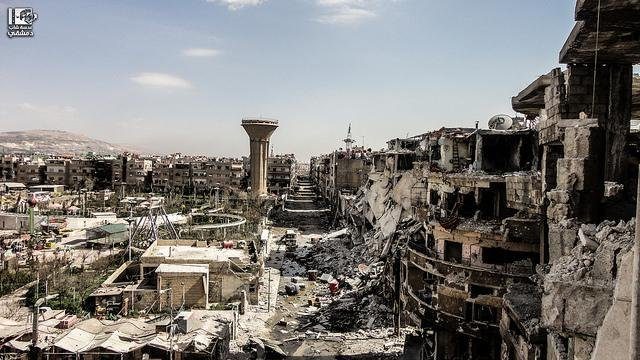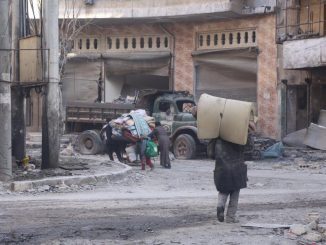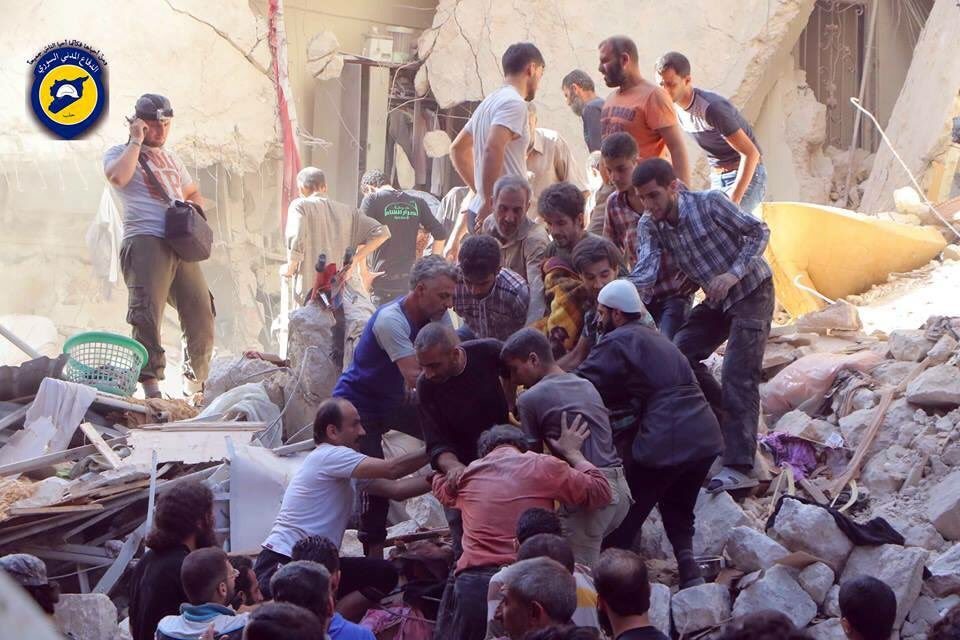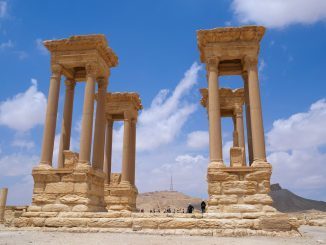
The Assad regime forces and their allies seized a strategic area in the besieged rebel-held eastern Ghouta area of Damascus, putting up more pressure on the biggest insurgent stronghold near the capital.
Rebels said the army stormed the town of Tel Kurdi on Sunday bringing them only a few kilometers from the city of Douma, the once sprawling urban heart of the eastern rural area of Damascus known as al Ghouta.
“After intensive battles on this front that continued more than fifty days in which the Assad militias used a scorched earth policy, the Mujahdeen were forced to retreat from the area,” said Hamza Bairqdar, the military spokesman for Jaish al Islam, the biggest rebel group in the area.
Since the start of the year, Syrian government forces and their allies, including Lebanese Hezbollah fighters, have moved into Eastern Ghouta from the south, the southwest, and the east, helped by infighting among rebel groups that control the area.
“The collapse of the fronts is due to the internal fights,” said Adnan Abdul Aziz, a lawyer in the rebel run Douma local council.
Tel Kurdi comes after a string of advances from the towns of Hosh Nasri, al Fara and before that Maydaa and Deir al-Asafir that culminated in the seizing of a southern agricultural belt.
The densely populated rural Ghouta area consists of farms and towns stretching northeast from Damascus that has been in rebel hands since the uprising began in 2011.
starve and die or surrender
Assad regime’s policy towards the rebel-held areas consists of besieging the areas and cutting every aid source from them, as well as conducting brutal attacks against them (with shells, missiles, airstrikes and barrel bombs).
In several Syrian areas, especially in rural Damascus, lengthy government sieges have prompted rebels to agree to evacuation deals, leading activists to accuse Damascus of using “starve or surrender” tactics.
In September, buses evacuated residents and rebel fighters from the Damascus suburb of Daraya under a deal that was agreed on after a four-year siege by government forces.
Also, the neighboring Mouadamiya town witnessed a similar fate after long and crippling siege.
Mouadamiya was hit with toxic sarin gas in 2013, according to the UN, and has suffered a three-year siege by Assad regime, leaving its 28,000 residents with little food or medical supplies.
Rebel fighters in Mouadamiya have negotiated several local truces with the Assad regime since 2012, and the suburb has been spared much of the destruction and bombing that occurred in Daraya, just a mile away.
The two areas have been under siege since 2012 with children living in increasingly desperate conditions, without regular access to food, clean water and medicines.
Some opposition groups have criticized these preconditions, calling them a major setback as Sunnis would be forced from their homes, further fracturing the country along sectarian lines.
They are seen as part of a pattern in which the government pushes out Sunni communities that have been living there for decades. In 2015, there was a similar deal in Zabadani on the outskirts of the capital.
Abo Kanan al-Dimashqi, a member of the Mouadamiya local council, said he believes the Assad regime “clearly wants to do what it did in Daraya”.
“They want to clear the area and put a different sect here. That’s their plan – a demographic change.”
The Syrian crisis began as a peaceful demonstration against the injustice in Syria. Assad regime used to fire power and violence against the civilians and led to armed resistance. 450.000 Syrians lost their lives in the past five years according to UN estimates, and more than 12 million have lost their homes.



